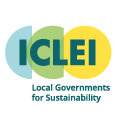Community-Scale Solid Waste Management using Hydro-pyrolysis Technology
This project aims to apply hydro-pyrolysis technology to improve solid waste management in community level and reduce greenhouse gas (GHG) emissions from the waste sector. The technology can quickly processes household waste into marketable goods, and reduces both the amount of waste transported to landfill and accumulated waste in landfill. Indeed, the project will reduce CO2 from fuel combustion and methane from decaying waste. The technology could reduce organic waste up to 9.6 ton (5.83%) per year and GHG emissions up to 1.99 tCO2e (20.28%) in 2030.
The proposed project also promotes circular economy through the production of valuable products from the waste i.e. solid and liquid fertilizers, with potential profit for community is up to USD 1,631 per year. The business community will provide job opportunities for the community and source of livelihood from the production and selling of marketable products from the community’s wastes.

